
An anxiety journal is a physical notebook or App that helps you track and manage your anxiety. It can be used to record your thoughts, feelings, and symptoms. This can help you to identify patterns and triggers. Keeping a diary or a journal like this will also help understand and manage anxiety, stress management, and improve your mood. This journal can of course be then shared with your therapist as well if needed.
Table of Contents
- What exactly is Anxiety? Do you have it?
- Ways of Treating Anxiety and Calming Your Mind
- Did your therapist tell you to keep an anxiety journals? Wondering how it’s beneficial?
- Which age groups should consider keeping an anxiety journals and why?
- 3 ways to find time, energy, and patience to begin journaling:
- What to write in an anxiety journal
- Writing Prompts to Combat Anxious Symptoms
- App or a Physical notebook for daily journaling?
- Journaling Can Help Reduce Anxiety
- Download and Try the CareClinic App Now!
What exactly is Anxiety? Do you have it?
Let’s quickly discuss what anxiety is, and the different types of anxiety there are. Anxiety is defined as “a feeling of worry, nervousness, or unease about something with an uncertain outcome”. Types of anxiety can be generalized (worrying about anything and everything), social (anxiety in social situations), and specific phobias (fear of flying, fear of heights, etc). Anxiety can be a mental distress and is the most common mental illness in the US.
List of anxiety patients in the US by anxiety type:
- Generalized anxiety disorder: 6.8 million
- Social anxiety disorder: 15 million
- Specific phobias: 19 million
- Panic disorder: 6 million
- Obsessive-compulsive disorder- 2.2 million
Anxiety is the most common mental illness in the United States, affecting 40 million adults. That’s 18% of the population. Elevated anxiety symptoms disorders are serious, chronic, and can be disabling.
According to the National Institute of Mental Health, anxiety disorders cost the U.S. more than $42 billion a year, almost one-third of the country’s entire mental health bill. Anxiety disorders are also the most common type of mental illness, with more than twice as many people affected as those with mood disorders such as depression and bipolar disorder.
Anxiety disorders typically start in childhood or adolescence, but can sometimes begin in adulthood. Women are more likely than men to suffer from an anxiety disorder, and the prevalence of anxiety disorders is highest among people ages 18 to 25. However, anxiety disorders are treatable and most people with anxiety disorders can lead normal, productive lives.
What triggers it?
Many reasons can trigger anxiety, some causes of anxiety disorders can be due to Genetics, Brain chemistry, Drug abuse, withdrawal from alcohol or drugs, Major life transitions or changes (divorce, job loss, etc), and health conditions such as heart disease or thyroid problems.
What Are The Common Symptoms of Anxiety?
Symptoms of anxiety can show in different ways, it’s important to keep track of your symptoms so you can discuss this with your therapist. Symptoms can be: feeling restless or on edge, being irritable, having a hard time concentrating, easily getting fatigued, having muscle tension and/or headaches, trouble falling or staying asleep, and having gastrointestinal issues such as diarrhea.
It can be tough living with anxiety because it can be very disruptive to your life. It’s important to find ways to cope with anxiety, and one way is by using an app or journal. Although it is not possible to completely eliminate anxiety you can reduce its symptoms. You may use an app like ‘Calm’ for meditation and relaxation while you can use an App like CareClinic to maintain therapy notes and do free-form writing in the Diary section of the App.
Ways of Treating Anxiety and Calming Your Mind
There are different ways to treat anxiety, some people may only need self-help methods while others may need medication and/or therapy. The most important part is to find what works for you. If you are struggling with anxiety, it is important to seek professional help. A psychotherapist can help you understand your anxiety and develop coping strategies. If you’re looking for a therapist, you can search the American Psychological Association’s database of psychologists (if you are in the States). Now just a quick brief on how Anxiety is usually treated.
Cognitive behavioral therapy
CBT is a type of therapy that focuses on helping you change the way you think and behave.
Exposure therapy
This therapy helps you face your fears so you can learn to cope with them.
Acceptance and commitment therapy
This therapy helps you accept your anxiety and make changes in your life so you can live with it.
Dialectical behavioral therapy
Dialectical behavioral therapy was invented in the 1970s by Marsha Linehan. The main purpose of this type of therapy is to help people learn how to cope with emotions and stress management in a healthy way. DBT is a type of cognitive behavioral therapy that helps people to develop coping mechanisms for anxiety. This type of therapy focuses on helping people to identify and change negative thought patterns, as well as teaching them healthy coping skills. Dialectical behavioral therapy has been shown to be an effective treatment for anxiety, and can provide relief from symptoms.
The main components of DBT are identifying and changing negative thought patterns, teaching healthy coping skills, focusing on the present moment, accepting emotions, and building a support network.
Meditation & Mindfulness
Meditation can help you calm your mind and body so you can better deal with your anxiety.
A mindfulness-based stress reduction is a form of meditation that helps you focus on the present moment and accept your thoughts and feelings
Herbal supplements
There are many herbal supplements that can help with anxiety. Such as Kava, Lemon balm, Chamomile, Valerian, St. John’s Wort, and 5-HTP. Be sure to check for interactions, especially with medications when adding any of these to your regimen.
Prescription medication
Many different types of medication can be prescribed for anxiety. The most common are SSRIs (selective serotonin reuptake inhibitors), SNRIs (serotonin-norepinephrine reuptake inhibitors), and benzodiazepines. Some examples of these are: Fluoxetine (Prozac), Sertraline (Zoloft), Paroxetine (Paxil), Venlafaxine (Effexor), Clonazepam (Klonopin), and Diazepam (Valium).
It’s important to talk to your doctor about the risks and benefits of each of these.
SSRIs (selective serotonin reuptake inhibitors) and SNRIs (serotonin-norepinephrine reuptake inhibitors) can interact with herbal supplements such as St. John’s Wort, 5-HTP, and SAMe. Be sure to check with your doctor or pharmacist before taking any of these. (reference)
What is the 3 3 1 rule for anxiety?
The 3 3 1 rule for anxiety is a simple and effective way to cope with anxiety. It involves identifying the thoughts, feelings, and behaviors that contribute to your anxiety. Once you have identified these, you then work on reframing them in a more positive light. This can be done by challenging your negative thoughts, practicing relaxation techniques, and getting rid of any unhelpful behaviors. The 3 3 1 rule is a helpful way to start dealing with anxiety in a more positive and constructive way.
Did your therapist tell you to keep an anxiety journals? Wondering how it’s beneficial?
Journaling is a form of therapy that can help you work through your thoughts and feelings. It can be helpful to get all of your anxious thoughts out of your head, and onto paper or in an app. Once they are out of your head, you can start to examine them more objectively. This can help you to see the thoughts for what they are: just thoughts. They are not reality. Once you can see them for what they are, you can start to challenge them and reframe them more realistically.
Which age groups should consider keeping an anxiety journals and why?
There is no one answer to this question as different people will find journaling helpful at different stages in their lives. However, some age groups may find journaling particularly beneficial.
For children and young adults, journaling can be a helpful way to process big emotions and engage in self-care. It can also be used as a tool to spot patterns and triggers for anxiety. For adults, journaling can be a way to relieve stress and improve their mood. And for seniors, journaling can help to boost memory and cognitive function. So really, anyone can benefit from journaling!
3 ways to find time, energy, and patience to begin journaling:
- Get organized: Purchase a notebook, diary, workbook, or App that will be dedicated to your journaling. This way you can have it with you at all times and won’t have to waste time looking for a pen and paper when you need it.
- Set aside some time each day: Just like with any new habit, it’s important to set aside some dedicated time to self-care and journaling. This can be first thing in the morning, before bed, or during your lunch break.
- Be patient: It takes time to get used to journaling, but stick with it! The more you do it, the easier it will become. And soon you’ll find that it’s a helpful way to manage your anxiety.
- Try guided journaling or using writing prompts so you are not “starting from scratch” each time causing more stress and anxiety! Daily prompts are a great way to get going.
Some Evidence-Based Techniques You probably didn’t know
Temperament learning context is a theory that suggests that an individual’s temperament, or personality type, interacts with the environment to produce certain behaviors. According to this theory, there are four basic temperaments: choleric, sanguine, phlegmatic, and melancholic. Each temperament is associated with different behaviors.
For example, someone who is choleric may be more likely to be aggressive and impulsive, while someone who is phlegmatic may be more likely to be passive and easygoing. The temperament learning context theory suggests that an individual’s behavior is a result of the interaction between their temperament and their environment.
So, how does temperament learning context relate to anxiety journaling and mental health?
Journaling can be seen as a way to create a positive environment for yourself, regardless of your temperament. By journaling, you are giving yourself a space to express your thoughts and feelings without judgment. This can be a very positive and healing experience, regardless of your temperament.
What to write in an anxiety journal
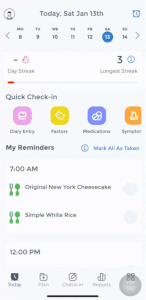
- Your thoughts: What were you thinking about when you felt anxious?
- Your emotions: What emotions were you feeling before, during, and after the anxiety episode?
- Your physical sensations: What physical sensations did you feel before, during, and after?
- Your behavior: How did you behave during the anxiety episode?
- The situation: What was the situation that caused you to feel anxious?
- The date and time: When did the anxiety episode occur?
- Your symptoms: What are your symptoms of anxiety?
- Your triggers: What are your anxiety triggers? and any patterns you notice?
- Your coping mechanisms: What did you do to cope with the anxiety?
- Your thoughts after the event: What are your thoughts about the anxiety episode now?
- Anything else that is relevant to your anxiety!
Examples of How to Journal for Anxiety (Example Entries based on writing prompts)
- I felt anxious when I was in the grocery store and saw somebody I didn’t know. I started to feel my heart race and my palms sweat. I felt like I needed to leave the store. I ended up leaving without getting anything.
- I was anxious about my upcoming surgery. I felt scared and worried about what would happen. I had a lot of physical symptoms like a racing heart and trouble sleeping. I tried to cope by reading and talking to my friends and family.
- I felt anxious at work today when my boss asked me to do a presentation. I started to feel like I couldn’t breathe and my heart was racing. I tried to take some deep breaths and focus on the positive. I ended up doing the presentation and it went well.
- I was anxious about my date tonight. I felt like I needed to vomit and my heart was racing.
There is no set rule for how often you should write in your anxiety journals. It is up to you and what works best for you. However, we recommend writing in it at least once a day, or whenever you feel the need to.
Writing Prompts to Combat Anxious Symptoms
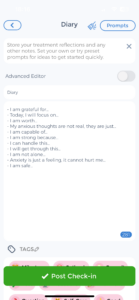
- I am grateful for…
- Today, I will focus on…
- I am worth…
- My anxious thoughts are not real, they are just…
- I am capable of…
- I am strong because…
- I can handle this…
- I will get through this…
- I am not alone…
- Anxiety is just a feeling, it cannot hurt me…
- I am safe…
Get to learn a bit more about Corrine Sweet
Corrine is a qualified psychologist who has a decade of experience helping people with anxiety. She provides both one-on-one therapy and online courses to help people overcome their anxiety. She has also written a book which in a nutshell states:
- There are many different types of anxiety and it is important to seek mental health professional help if you are struggling.
- Anxiety can be treated with medication, therapy, and/or lifestyle changes.
- Journaling can be a helpful way to cope and eliminate anxiety.
- Some writing prompts that may help combat anxious symptoms include: “I am grateful for…”, “Today, I will focus on…”, and “I am capable of…”
- Sweet concludes by saying that everyone experiences anxiety in different ways and there is no one “right” way to deal with it.
App or a Physical notebook for daily journaling?
CareClinic is a superior choice for journaling your anxiety than using a physical journal or notebook for a few reasons. First, it is more convenient to use an App because you can journal anywhere and anytime. Second, an App is more secure than a physical journal, which can be lost or stolen. Third, an App can provide you with more features and tools to help you journal, such as tracking the severity of all symptoms, not just anxiety symptoms and other factors related to your lifestyle, helping you improve your overall well-being.
Tips on better self-care and anxiety relief
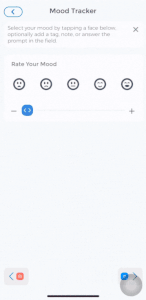 Learn to soothe stress by identifying your stressors and triggers: What are the things that tend to trigger or increase your stress levels? Once you know what these are, you can try to avoid them or be prepared for them. You can also engage in deep breathing, taking some deep breaths can help to slow down your heart rate and relax your body.
Learn to soothe stress by identifying your stressors and triggers: What are the things that tend to trigger or increase your stress levels? Once you know what these are, you can try to avoid them or be prepared for them. You can also engage in deep breathing, taking some deep breaths can help to slow down your heart rate and relax your body.
Another way is exercising and mindfulness exercises as they release endorphins, which have mood-boosting effects. Along with just spending time in nature since it promotes a sense of calm. If you are in a city and can’t do that, consider trying to spend time with loved ones if possible. Spending time with people who make you feel happy and loved can help to reduce and soothe stress (and anxiety!).
Panic Attacks
If you find yourself having panic attacks often, it is important to seek professional help as soon as possible. Panic attacks can be extremely debilitating and may even lead to other health problems if not treated. A professional can help you to understand your panic attacks and develop a treatment plan to reduce their frequency and intensity.
Removing Negative thinking for a more peaceful life
Removing negative emotions is a core part of managing anxiety. One way to do this is by practicing gratitude. When you focus on the things that you are grateful for, it can help to shift your focus away from the emotions that are causing you anxiety. Another way to remove negative emotions is by practicing self-compassion. This means being kind and understanding towards yourself, even when you make mistakes. When you are more accepting of yourself, it can be easier to let go of the emotions that are causing you anxiety.
Self-awareness
Being aware of your thoughts, emotions, and behaviors. When you are self-aware, you can catch yourself before you start to feel anxious and take steps to reduce your anxiety.
Self-acceptance
Accepting yourself for who you are, even if you have anxiety. This includes accepting your thoughts, emotions, and behaviors. When you are more accepting of yourself, it can be easier to manage your anxiety.
Journaling Can Help Reduce Anxiety
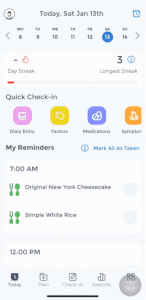 Yes, journaling for anxiety can help reduce symptoms and triggers. It can also help you to become more aware of your thoughts and coping mechanisms. CareClinic is interactive and can provide guidance when journaling for anxiety with built-in prompts. A more guided journal can significantly improve completion rates day to day and reduce mental distress.
Yes, journaling for anxiety can help reduce symptoms and triggers. It can also help you to become more aware of your thoughts and coping mechanisms. CareClinic is interactive and can provide guidance when journaling for anxiety with built-in prompts. A more guided journal can significantly improve completion rates day to day and reduce mental distress.
CareClinic allows you to track your thoughts and progress over time and see charts, patterns, and correlations to provide greater clarity in real-time. This can be a very valuable way to get to the root of your anxiety and work on solutions.
CareClinic can also help you set reminders to journal on time so you can hold yourself accountable and build healthy habits! It is also more convenient and secure than a physical journal, as well as provides additional features to help with anxiety management.
Download and Try the CareClinic App Now!
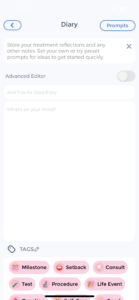 Remember, Panic attacks can be managed by seeking professional help and implementing a treatment plan. Practicing gratitude and self-compassion can help to remove negative emotions associated with anxiety. In turn, you will learn to become more self-aware and accept yourself for who you are. Download the App by clicking here.
Remember, Panic attacks can be managed by seeking professional help and implementing a treatment plan. Practicing gratitude and self-compassion can help to remove negative emotions associated with anxiety. In turn, you will learn to become more self-aware and accept yourself for who you are. Download the App by clicking here.


